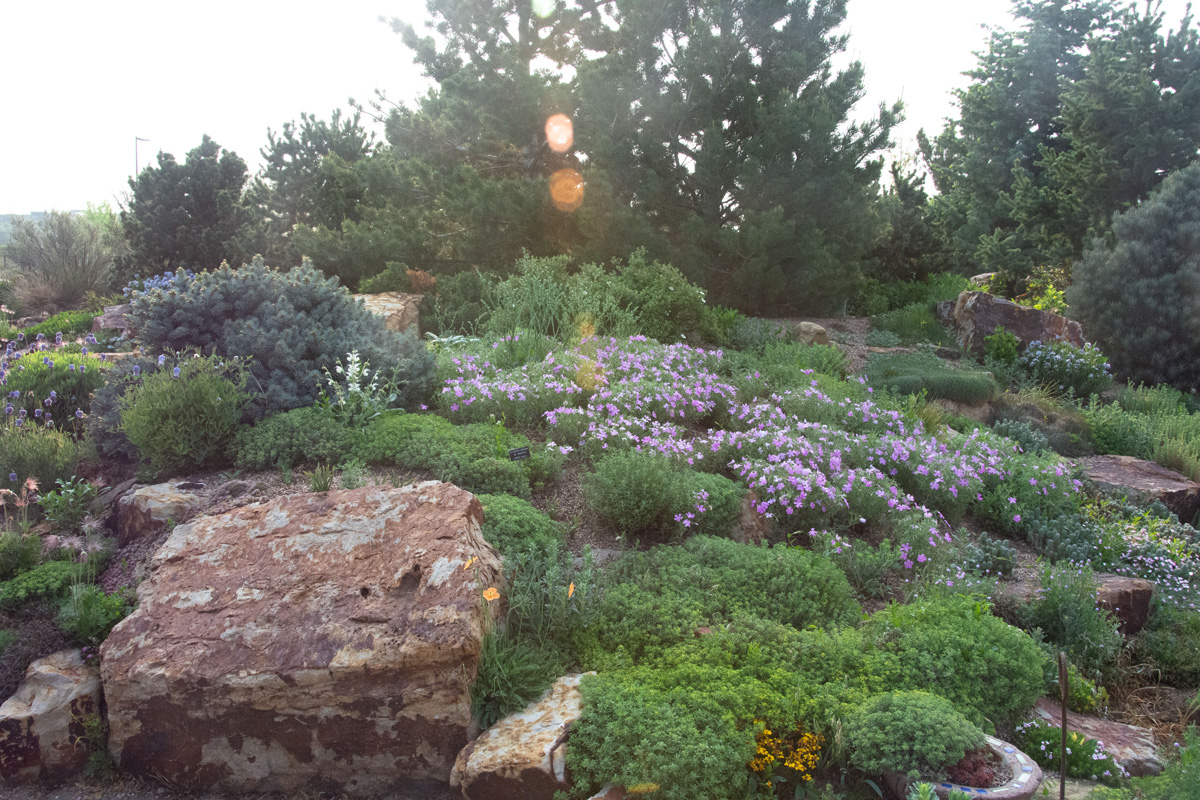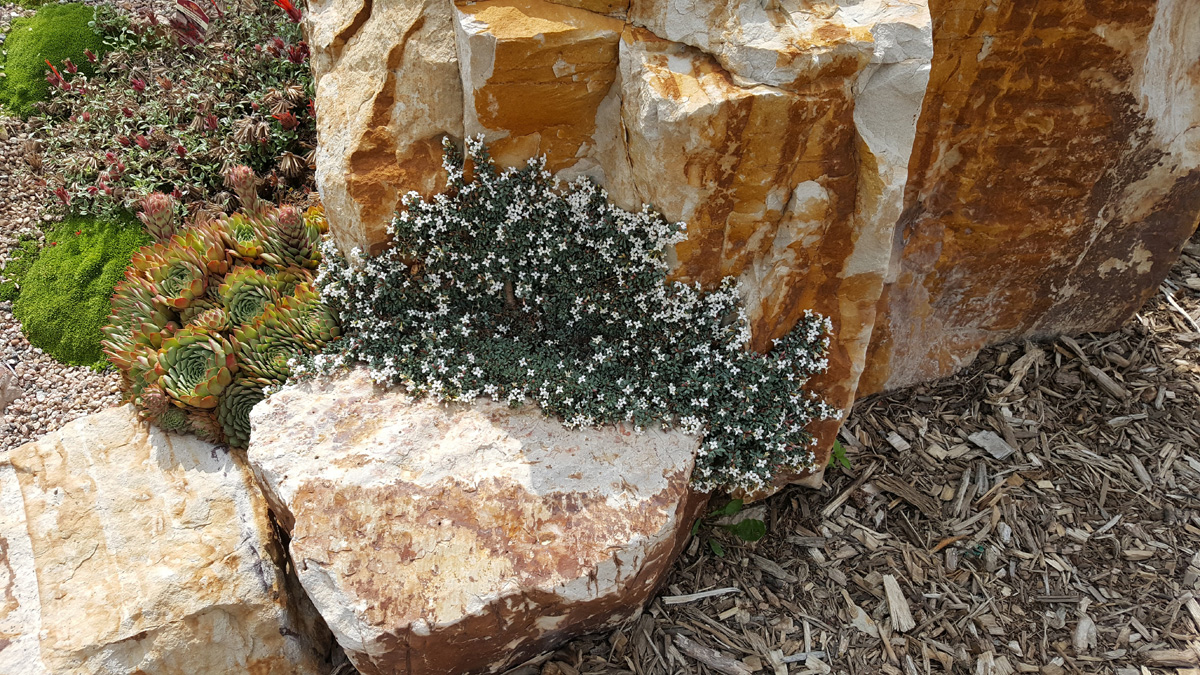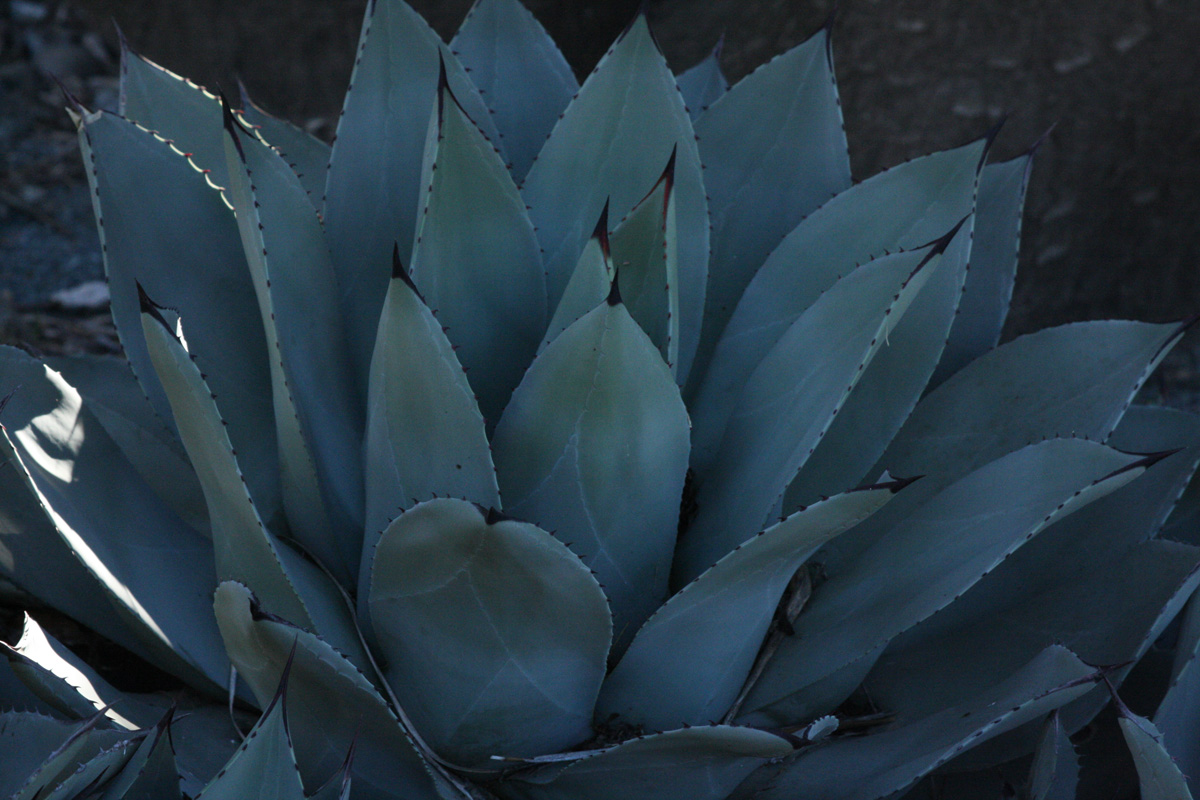Last fall, this column featured Showy Native Plants for Rocky Soils. Not included in that plant palette were rock gardens. While similar in that the plants for such spaces require exquisite (or as one might hear across the pond, “sharp”) drainage, the spaces are worth distinguishing. Rocky soils occur naturally across the globe. Regionally, we have a preponderance of them. Rock gardens, however, are man-made. Here are some guidelines for building your own rock garden.
Culturally, the longstanding traditions of rock gardening have dual origins in both ancient East Asia and Victorian Europe. As we think of them here in the States, rock gardens are spaces designed after the Victorian concept: places to grow diminutive and delightful plants, particularly those from high elevation regions (like steppe and alpine environments) that otherwise would fail in cultivation. The rocks themselves help to achieve this goal by providing microclimates for such plants, but they also can be used to modify how water drains through the soil profile to improve its suitability. With a bit of creative rock work and thoughtful plant siting, a huge spread of plant species can be grown in a rock garden that otherwise would not succeed.
Building a Rock Garden Berm
Perhaps most commonly, rock gardens are designed in “berms,” or mounded beds of soil. Large rocks are often used to help shape and contain the soil on such berms. When creating a berm, consider pathway access as well as how it will be irrigated. Conceiving paths and then working berms in around them can be most effective, though their shapes will change somewhat with rock work and earth moving. I’ve grown on berms ranging from 1 to 5 feet high and have found that a berm should be at least 3 feet high (after soil settling) for most rock garden plants. Generally, expect soil to settle one quarter to one third of its original volume over a year or two.
When framing berms or building rock work into the berms themselves, I live by a few rules:
- Procure rocks that are larger than you desire visually (in part, this is due to the second rule).
- Sink at least one third of each rock into the soil (otherwise the rocks will appear out of place and as if they were plopped down).
- Ensure that rocks are touching at or above the soil surface to help group them visually.
- Use the same type of rock for the entire berm.
- If strata (lines that appear in each new layer of the rock) can be seen on the rocks, align them for a more professional appearance.
Note: If aligning strata and the actual rock work portion of your project proves to be a highlight, consider investing in The Crevice Garden by Kenton Seth and Paul Spriggs, an invaluable resource for those ready to take their rock gardening to the next level. This book not only features rock work and a style with roots in the Czech Republic, but also serves as a good introduction to a large number of unique plants well-suited to rock gardens.
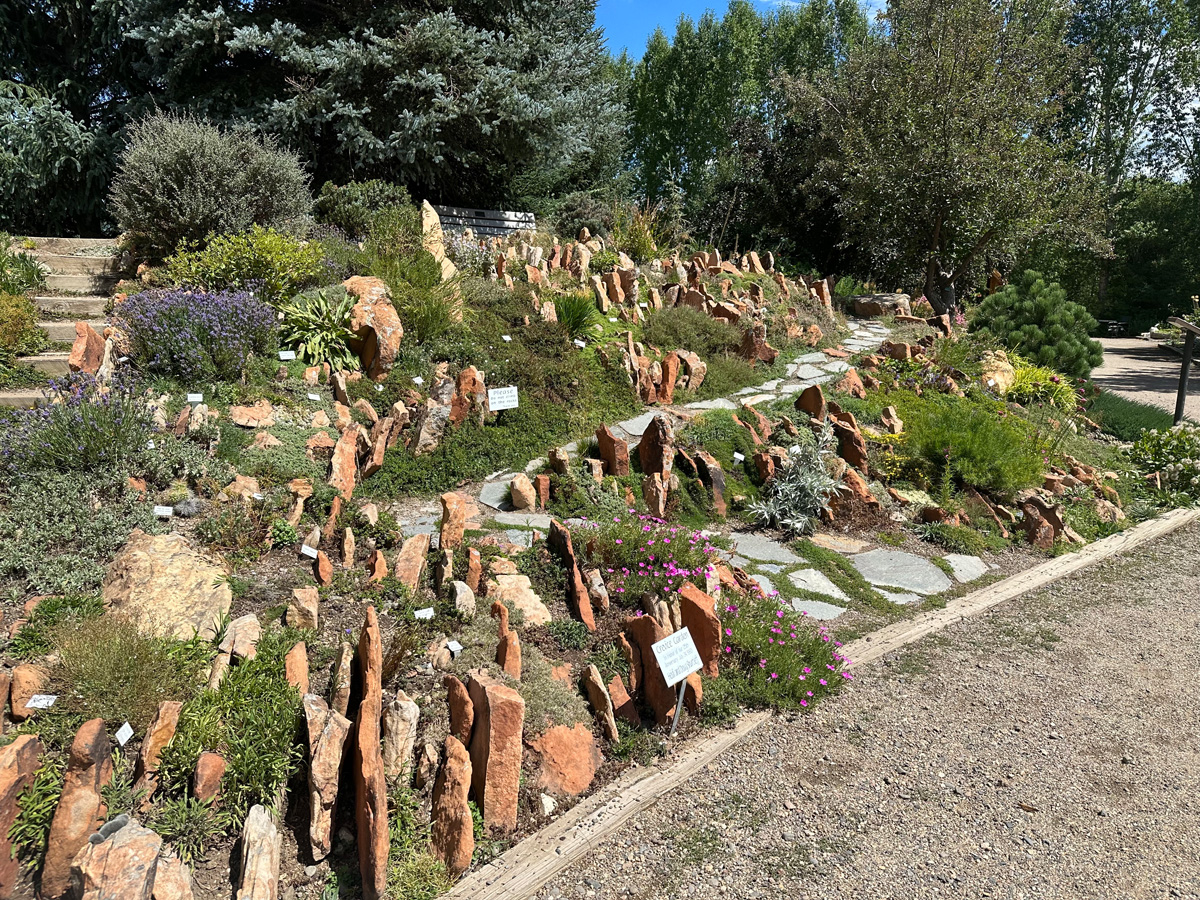
Plants for Rock Gardens
Plants of particular note for rock gardens in the region include Penstemon spp., Eriogonum spp., and Fendlera rupicola (mentioned in Showy Native Plants for Rocky Soils), as well as more unusual and eccentric offerings like the following. Be warned, however, that all three will struggle in a traditional garden bed.
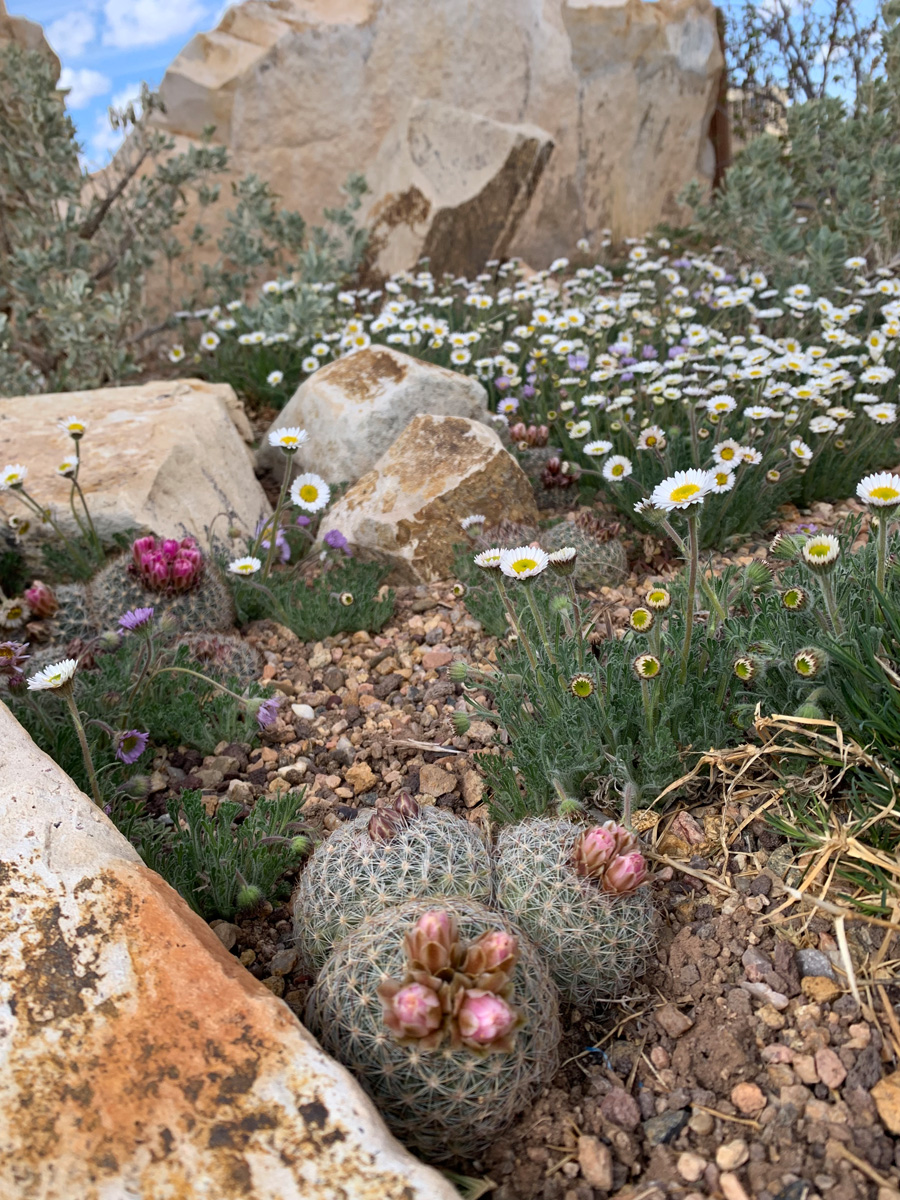
Cutleaf daisy
Erigeron compositus, Zones 4–7
This native cushion plant delights in early spring with numerous pink to white, daisy-like flowers on wiry stems above ferny leaves. It’s also incredibly hardy and won’t blink at –40°F.
Daphne jasminea
Daphne jasminea, Zones 5–9
This fragrant, dwarf daphne remains just a couple of inches high and grows slowly to cover the soil or a boulder. It prefers a site with afternoon shade, which can be surprisingly easy to find if the plant is tucked in on the east side of a boulder.
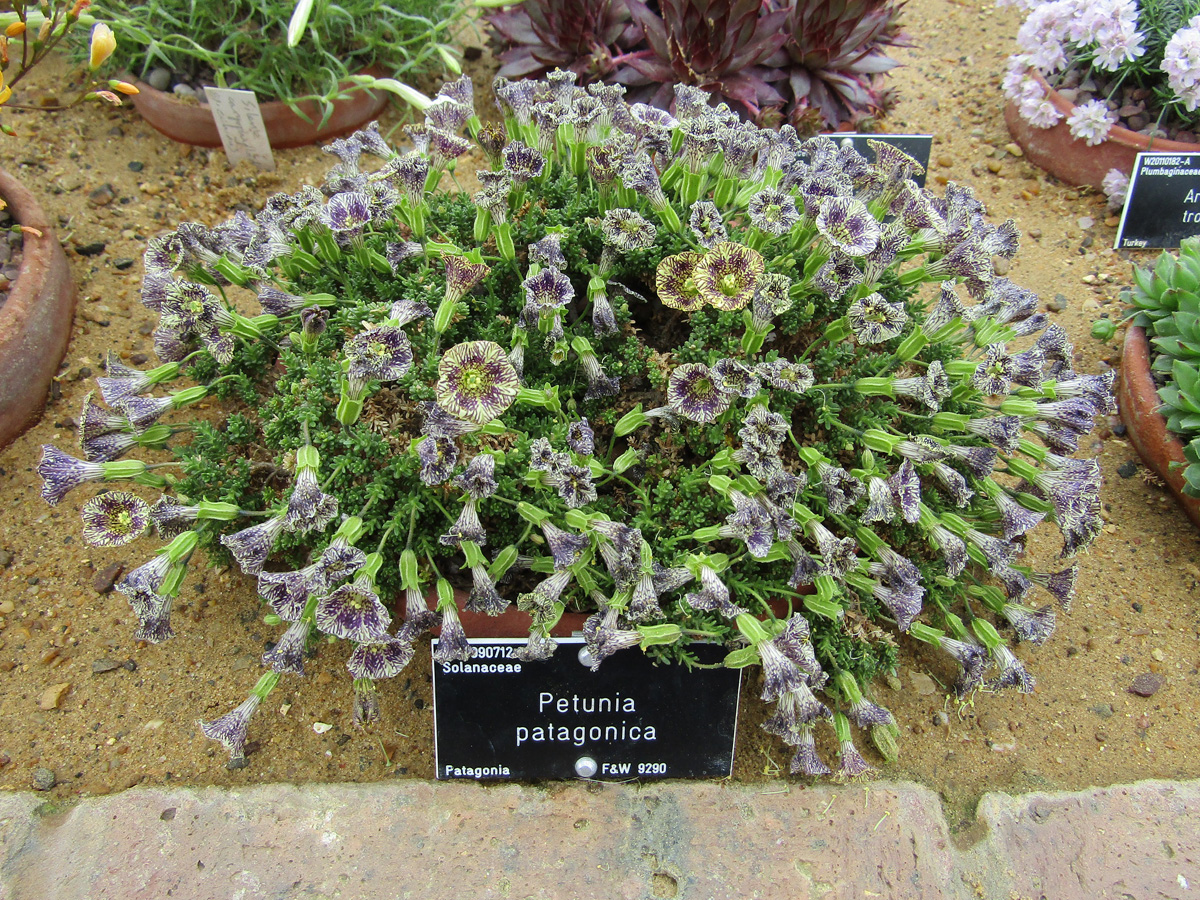
Petunia (Fabiana) patagonica
Petunia (Fabiana) patagonica, Zones 5–9
A hardy petunia (you read that right) that evolved on the Patagonian steppe, this lovely plant grows in large flowering mounds. Don’t get too excited about a perennial petunia, however, as botanists are considering changing its classification.
Before siting your smaller plant material, however, consider further strengthening your garden’s “bones” with some substantive dwarf conifers and hardy agave, yucca, and cacti. To my initial surprise, Parry’s agave (Agave parryi, Zones 7–10) survives happily on the south side of several rock gardens in the Fort Collins area alongside ‘Snow Leopard’ Whipple’s cholla (Cylindropuntia × multigeniculata ‘Snow Leopard’ syn. Cylindropuntia whipplei ‘Snow Leopard’, Zone 5–9), which help to keep these gardens interesting after the spring show loses steam in summer’s heat.
Use Microclimates to Your Advantage
Gaining a strong understanding of how to capitalize on microclimates in a rock garden is a foundational concept for success. Heat lovers and marginally hardy plants (cacti, fiber plants, etc.) prefer exposures with afternoon sun, while woodland plants often appreciate cooler, shadier northern exposures, and alpine plants excel with morning sun on the east side of a berm.
Like any style of gardening, experience is one of the best teachers, so just getting started can be one of the fastest ways to learn. If you’re like me, though, and insist on an obnoxious amount of research, you can’t beat the North American Rock Garden Society (nargs.org), which has a great periodical on the topic, a top-tier seed exchange, and regional chapter meetings to match. Or consider stopping by or volunteering in your local botanic garden’s rock garden, where you can be exposed to new ideas or work alongside a regional expert in the topic.
Learn more:
Plants for Drought-Prone Areas
Bryan Fischer lives and gardens at the intersection of the Great Plains and the Rockies. He is a horticulturist and the curator of plant collections for a local botanic garden.
Photos except where noted: Bryan Fischer



